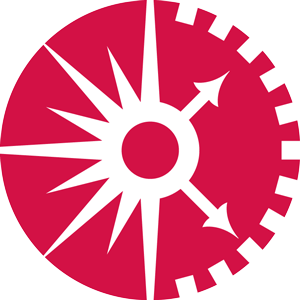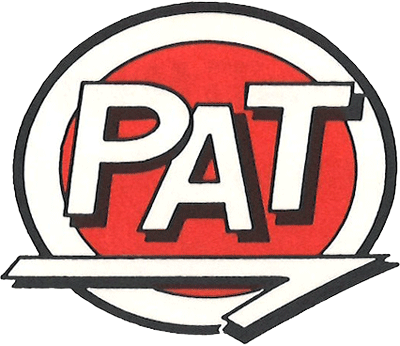 |
Port Authority StreetcarsPort Authority of Allegheny County |
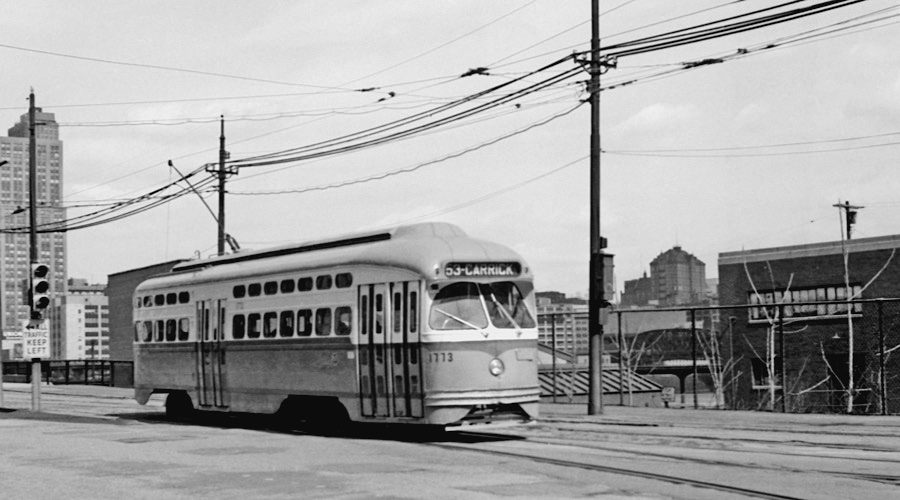
Pittsburgh, Pa / Mar 1971 / JCH
 n the early 1960s, the city of Pittsburgh had the largest surviving streetcar system in the United States, with the privately owned Pittsburgh Railways Company operating more than 600 PCC cars on more than 40 routes. However, in 1964 the system was acquired by the Port Authority of Allegheny County (PAT), which rapidly converted most of the streetcar rail routes to bus service. By the early 1970s, only a handful of streetcar routes remained, most of which used the Mt. Washington Transit Tunnel just south of the Monongahela River to reach the South Hills area.
In this period, Port Authority planners planned to scrap the rail system entirely in favor of busways and an automated guideway transit system developed by Westinghouse Electric called Skybus. Community opposition derailed this bus-only plan. The surviving electric streetcar system was retained, eventually upgraded into the current light rail system now know as the "T".
n the early 1960s, the city of Pittsburgh had the largest surviving streetcar system in the United States, with the privately owned Pittsburgh Railways Company operating more than 600 PCC cars on more than 40 routes. However, in 1964 the system was acquired by the Port Authority of Allegheny County (PAT), which rapidly converted most of the streetcar rail routes to bus service. By the early 1970s, only a handful of streetcar routes remained, most of which used the Mt. Washington Transit Tunnel just south of the Monongahela River to reach the South Hills area.
In this period, Port Authority planners planned to scrap the rail system entirely in favor of busways and an automated guideway transit system developed by Westinghouse Electric called Skybus. Community opposition derailed this bus-only plan. The surviving electric streetcar system was retained, eventually upgraded into the current light rail system now know as the "T".
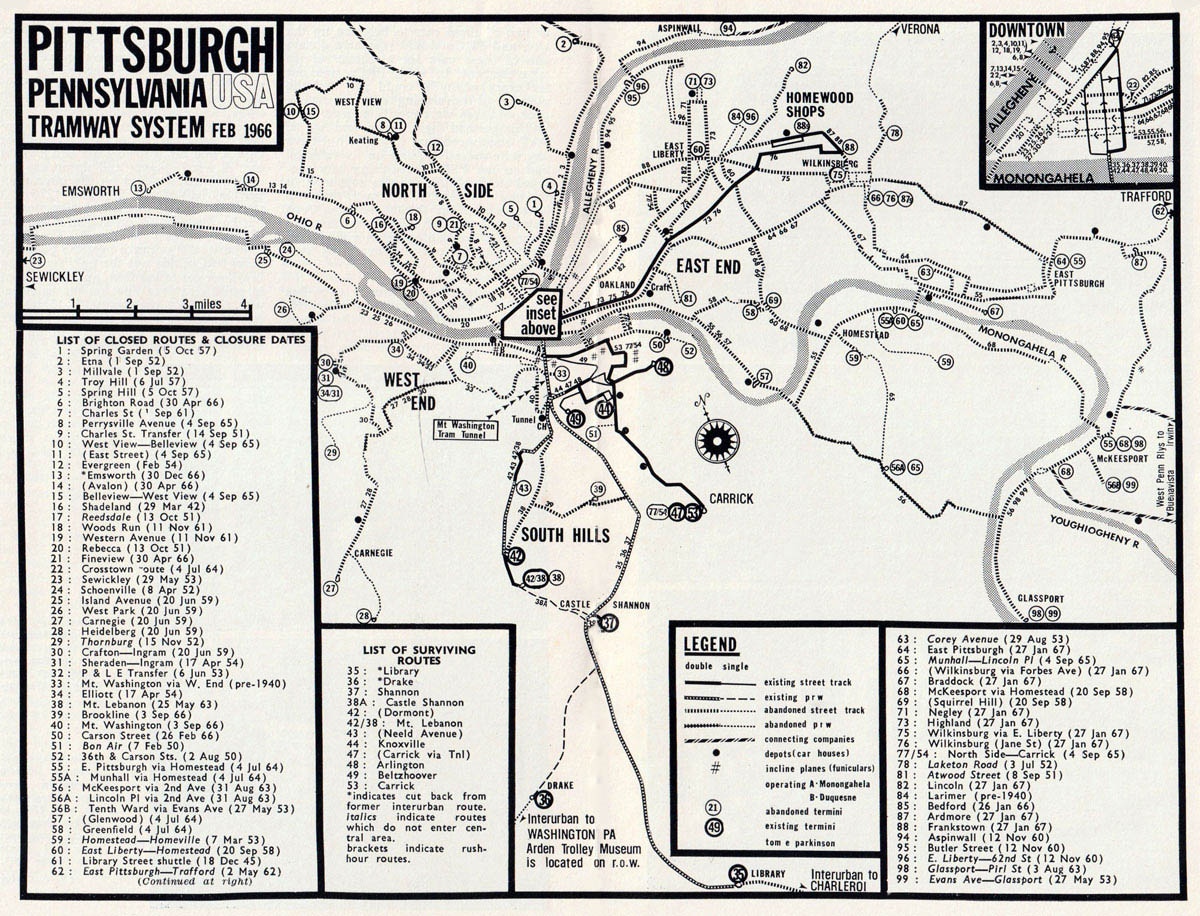
collection

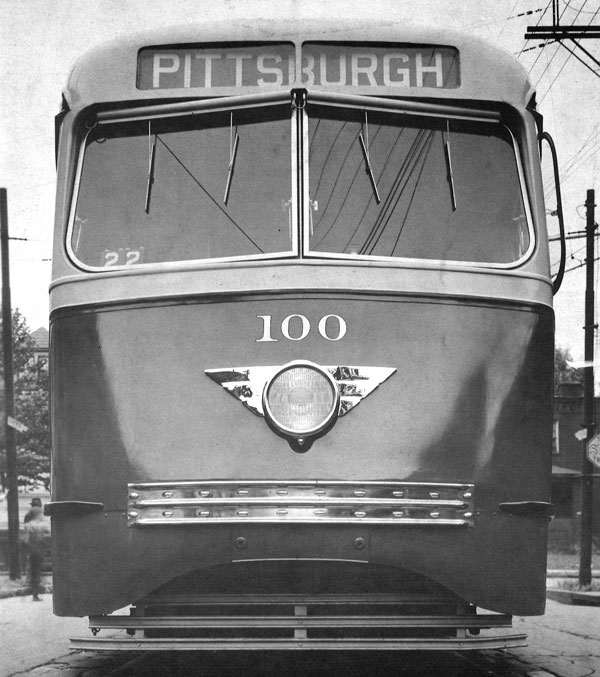
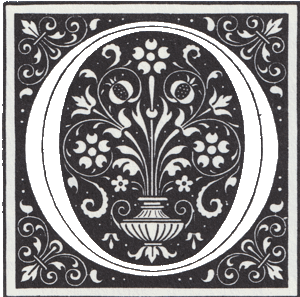 n 26th July, 1936, PRCo entered a new era with the entry into service of PCC-car 100, its first. Later this car became the instruction car and it is now the oldest PCC-car on an operating property, although it is now derelict. A total of 666 PCC-cars was purchased over the next 12 years, mainly in batches of 100. Car 1600, delivered in 1945, was an experimental car, the first to have standee windows. It had a specially-developed all-electric braking system, and became the prototype for the 1700 series. This latter series, the newest of the system, is noted (and frequently cursed) for its hermetically-sealed windows that go along with its forced-air cooling and heating system. Nine cars of the 1600 series and 24 of the 1700 series were equipped specially for the two interurban lines. They had roof- mounted headlamps, lifeguards, air whistles, a full emergency kit, and opening rear windows to enable the motorman to put the trolley back on the wire when on the many trestle bridges. In 1948, all these cars were fitted with the "trolleyphone, " a telephone system which uses a frequency-modulated carrier on the trolley-wire to enable the motorman to keep in touch with the despatcher; when the interurban routes were cut back to Library and Drake in 1953, both this and the emergency kits were discontinued.
n 26th July, 1936, PRCo entered a new era with the entry into service of PCC-car 100, its first. Later this car became the instruction car and it is now the oldest PCC-car on an operating property, although it is now derelict. A total of 666 PCC-cars was purchased over the next 12 years, mainly in batches of 100. Car 1600, delivered in 1945, was an experimental car, the first to have standee windows. It had a specially-developed all-electric braking system, and became the prototype for the 1700 series. This latter series, the newest of the system, is noted (and frequently cursed) for its hermetically-sealed windows that go along with its forced-air cooling and heating system. Nine cars of the 1600 series and 24 of the 1700 series were equipped specially for the two interurban lines. They had roof- mounted headlamps, lifeguards, air whistles, a full emergency kit, and opening rear windows to enable the motorman to put the trolley back on the wire when on the many trestle bridges. In 1948, all these cars were fitted with the "trolleyphone, " a telephone system which uses a frequency-modulated carrier on the trolley-wire to enable the motorman to keep in touch with the despatcher; when the interurban routes were cut back to Library and Drake in 1953, both this and the emergency kits were discontinued.
Tom E. Parkinson / The Street Railways of Pittsburgh, 1859-1967
 Class Leader
Class Leader
Port Authority Transit #1700 was the first streetcar delivered in a series of 100 PCC type cars built by St. Louis Car Company between 1948-49. These would be the last cars delivered new to the Pittsburgh system. No. 1700 and 24 other cars were delivered as Interurban cars, as described above.
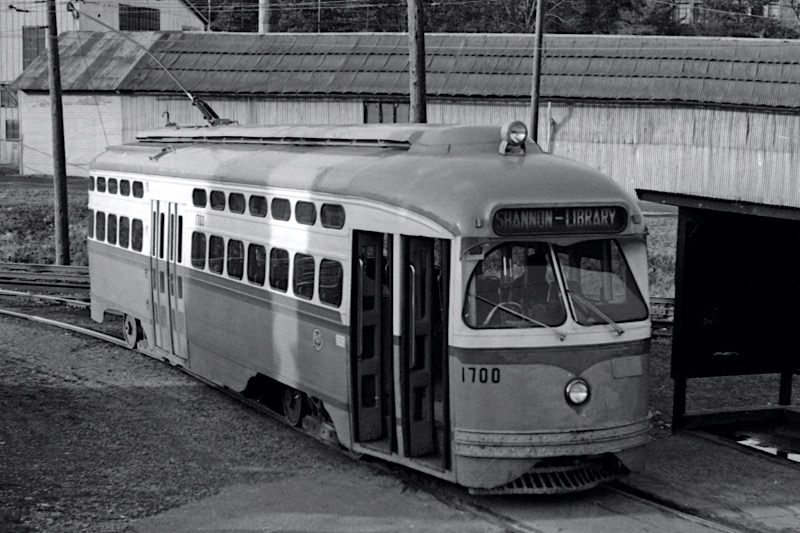
Port Authority Transit #1700
Pittsburgh, Pa / Mar 1971 / JCH


Port Authority Transit #1700
1 of 25 Interurban cars
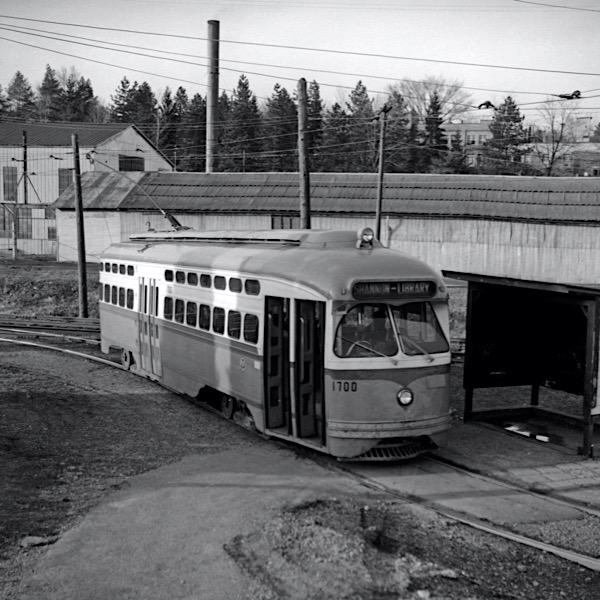
Pittsburgh, Pa / Mar 1971 / JCH
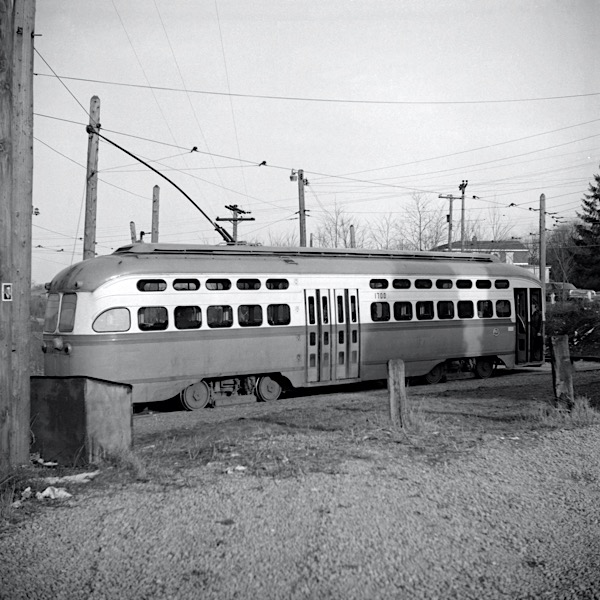
Pittsburgh, Pa / Mar 1971 / JCH
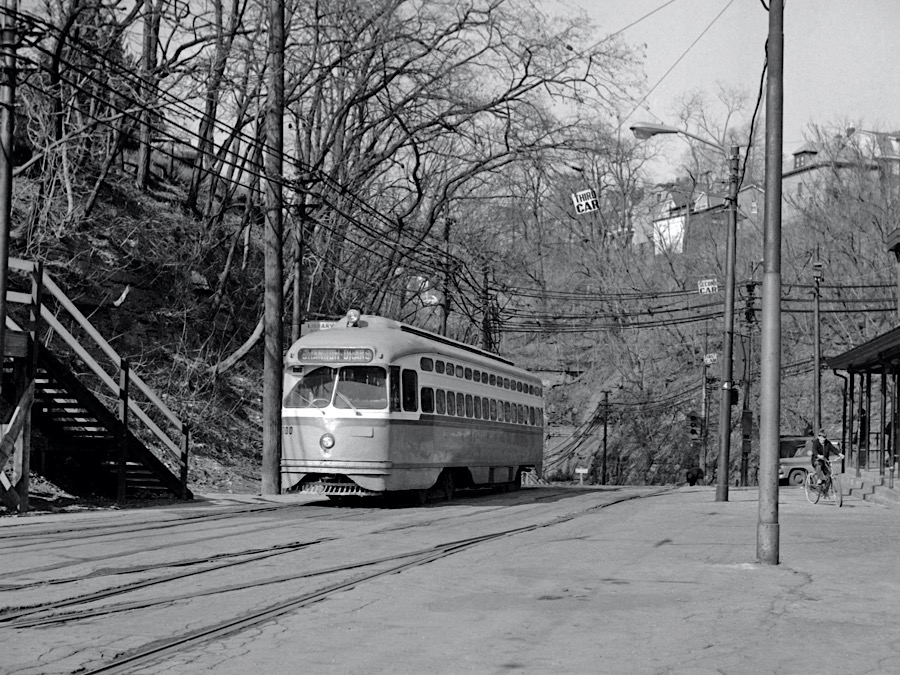
Pittsburgh, Pa / Mar 1971 / JCH
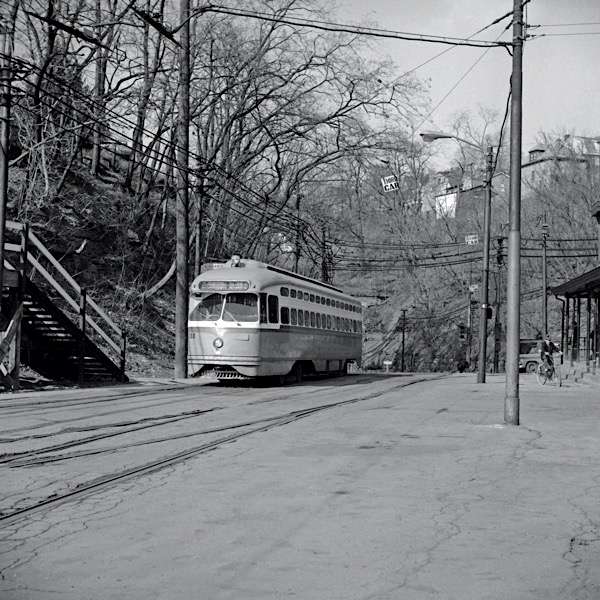
Pittsburgh, Pa / Mar 1971 / JCH
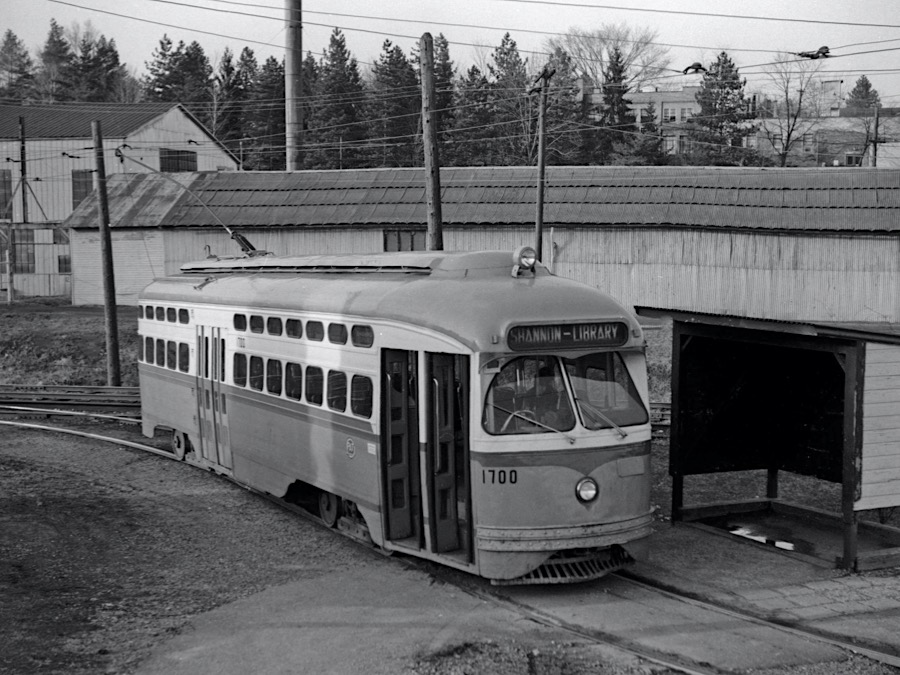
Pittsburgh, Pa / Mar 1971 / JCH
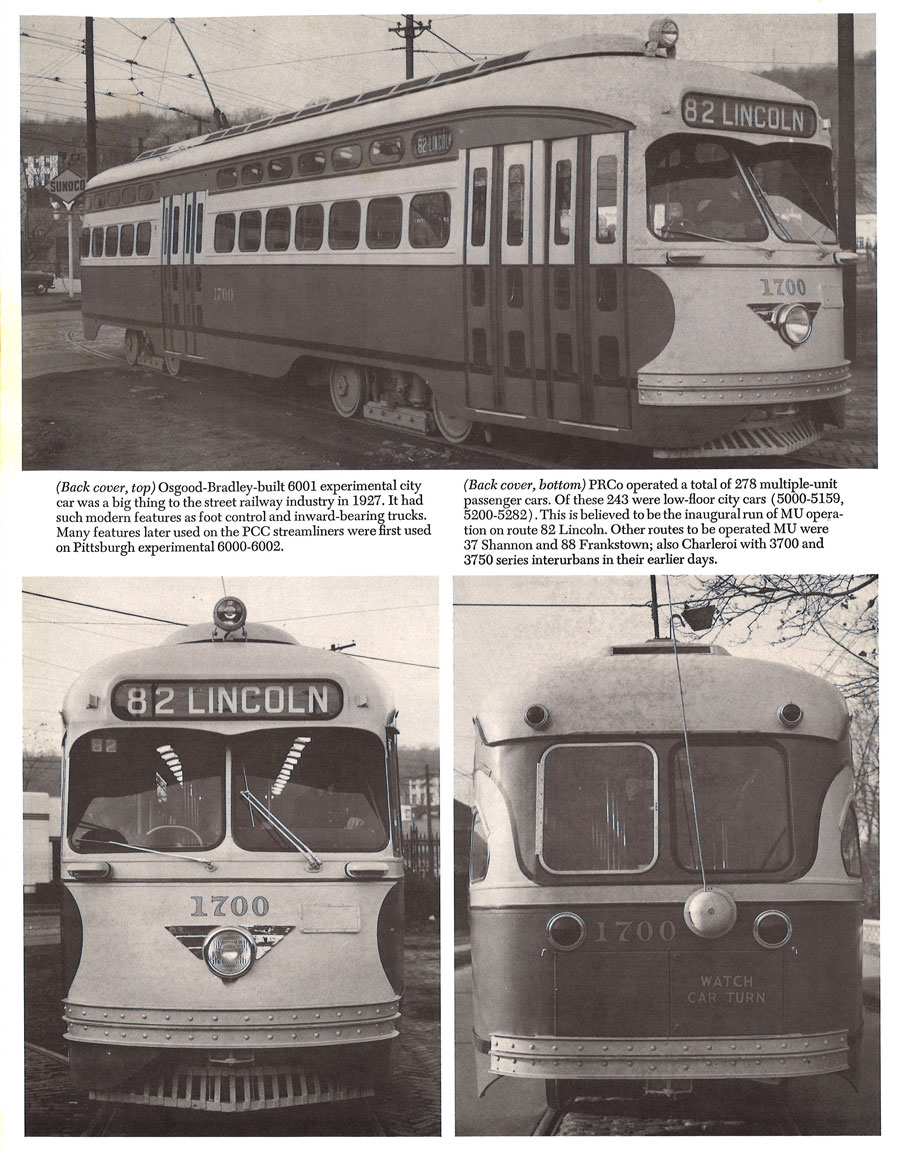
from Pittsburgh Trolley Pictorial - 1971 / collection
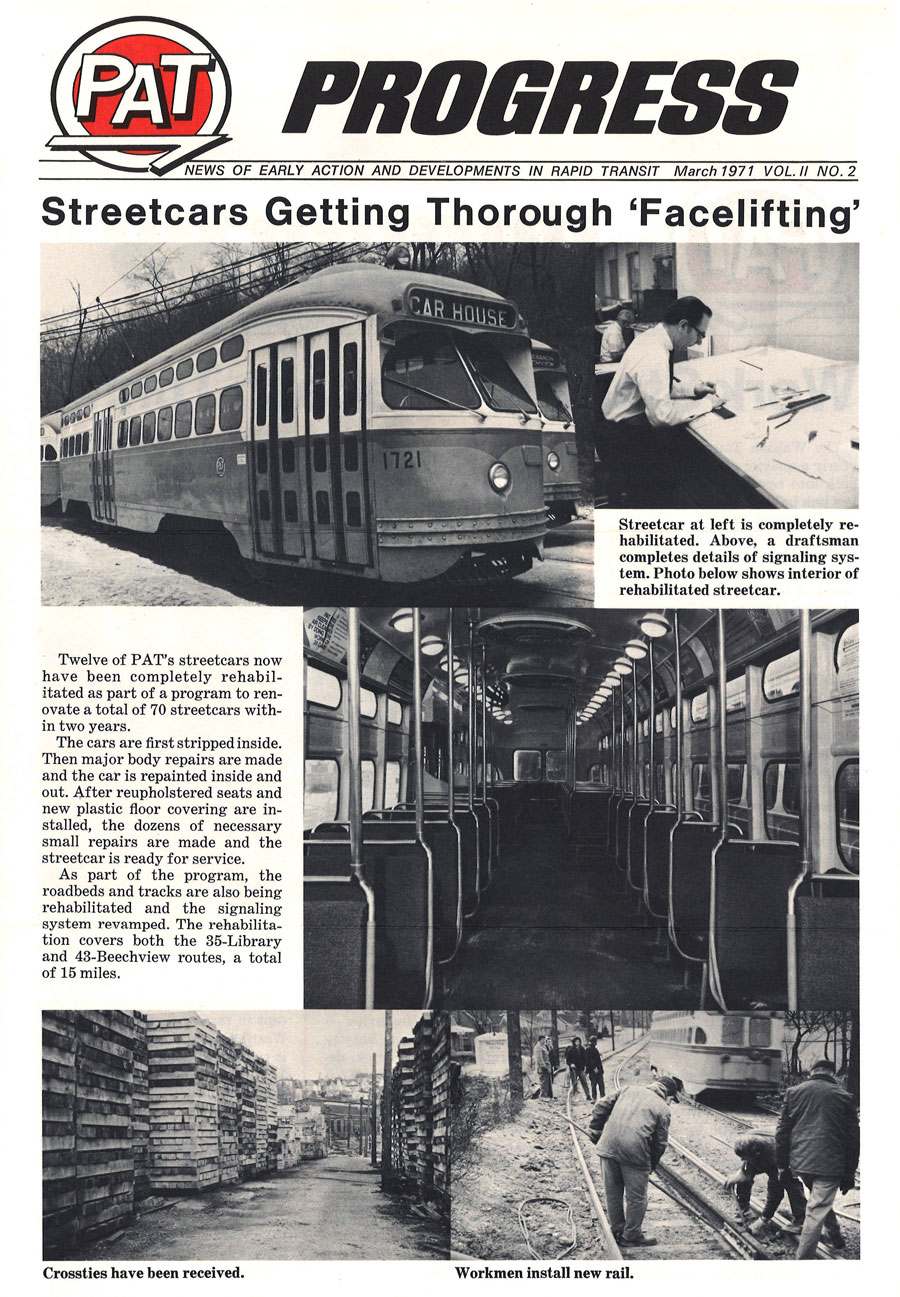
from Port Authority Transit PROGRESS newsletter - Mar 1971 / collection
Streetcars
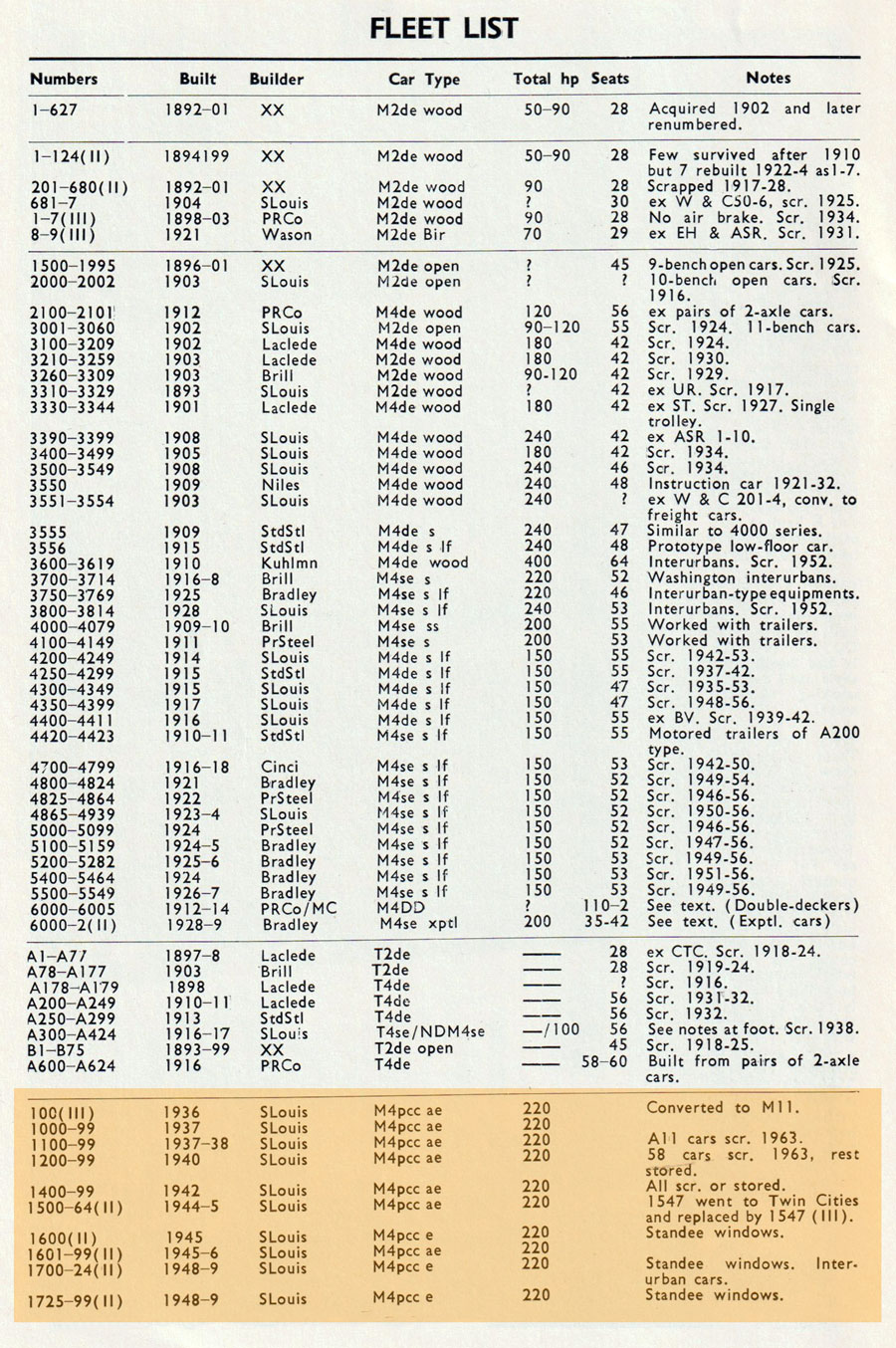
from The Street Railways of Pittsburgh, 1859-1967 / collection
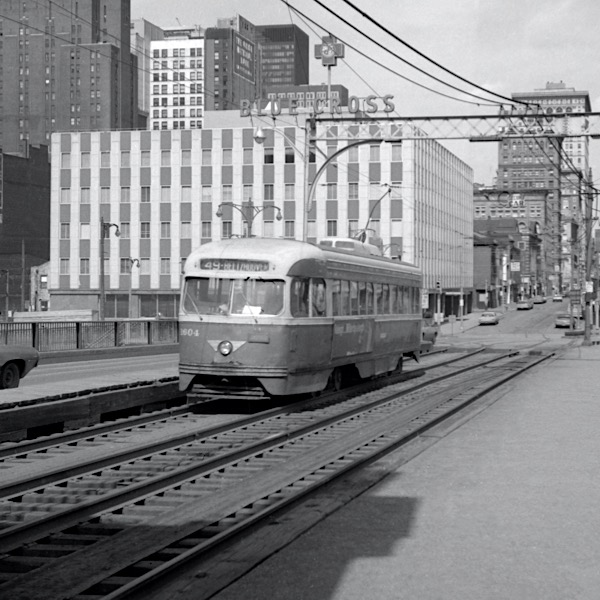
Port Authority Transit #1604
Pittsburgh, Pa / Mar 1971 / JCH
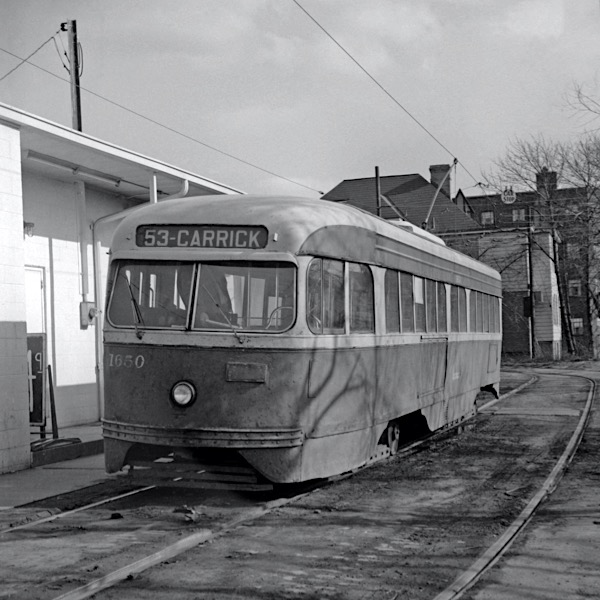
Port Authority Transit #1650
Pittsburgh, Pa / Mar 1971 / JCH
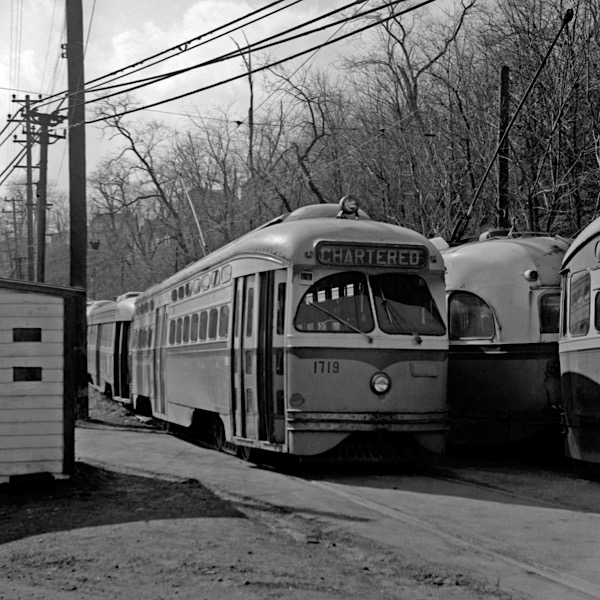
Port Authority Transit #1719
Pittsburgh, Pa / Mar 1971 / JCH
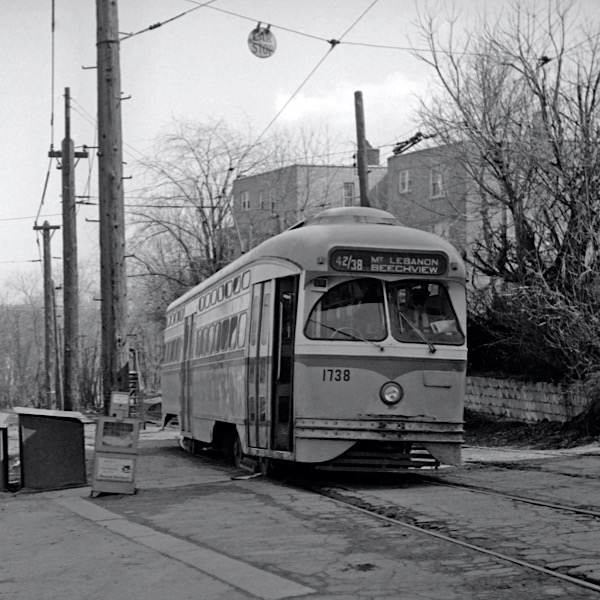
Port Authority Transit #1738
Pittsburgh, Pa / Mar 1971 / JCH
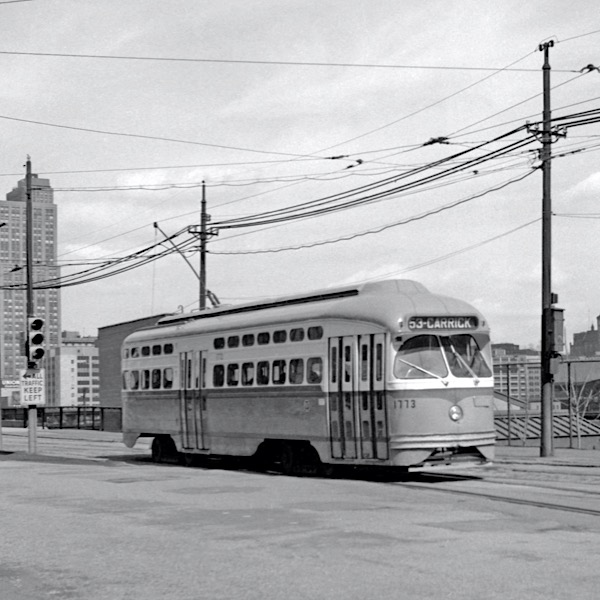
Port Authority Transit #1773
Pittsburgh, Pa / Mar 1971 / JCH
The PCC is a streetcar design that was first built in the United States in the 1930s. The "PCC" initialism originated from the design committee formed in 1929 as the "Presidents' Conference Committee", renamed the "Electric Railway Presidents' Conference Committee" (ERPCC) in 1931. The group's membership consisted primarily of representatives of several large operators of U.S. urban electric street railways plus potential manufacturers. Three interurban lines and at least one "heavy rail", or rapid transit, operator were represented as well. Also included on the membership roll were manufacturers of surface cars (streetcars) and interested component suppliers.
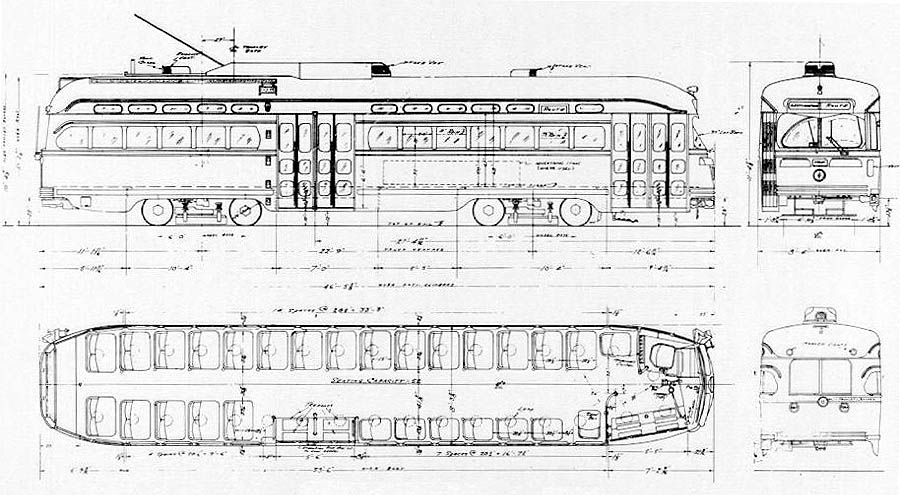
ERPCC's goal was to design a streamlined, comfortable, quiet, and fast accelerating and braking streetcar that would be operated by a seated operator using floor mounted pedal controls to better meet the needs of the street railways and appeal to riders. ERPCC prepared a detailed research plan, conducted extensive research on streetcar design, built and tested components, made necessary modifications and revisions based upon the findings, and ultimately produced a set of specifications for a standardized and fixed design. It included a modest list of available options with ample room for customer customization, but was to be built with standard parts as opposed to a custom designed car body with diverse parts added depending on the whims and requirements of the individual customer. Numerous national and international users operated large fleets of PCC cars for many years.
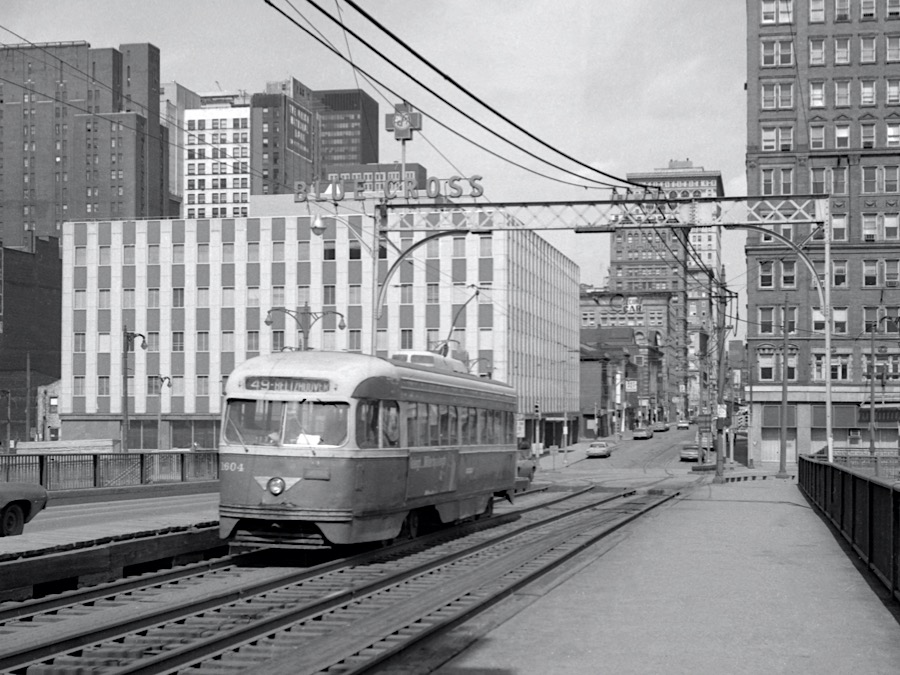
Pittsburgh, Pa / Mar 1971 / JCH
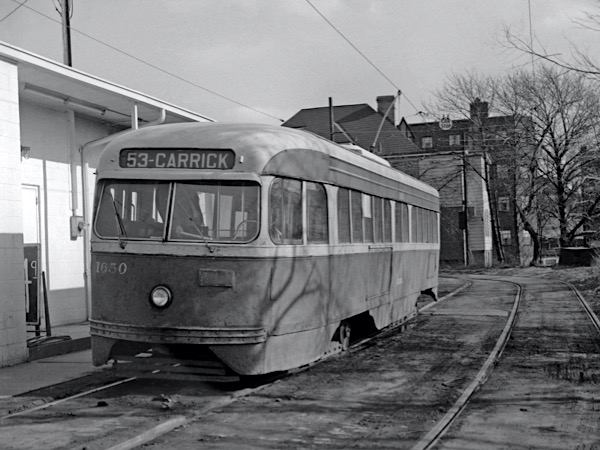
Pittsburgh, Pa / Mar 1971 / JCH
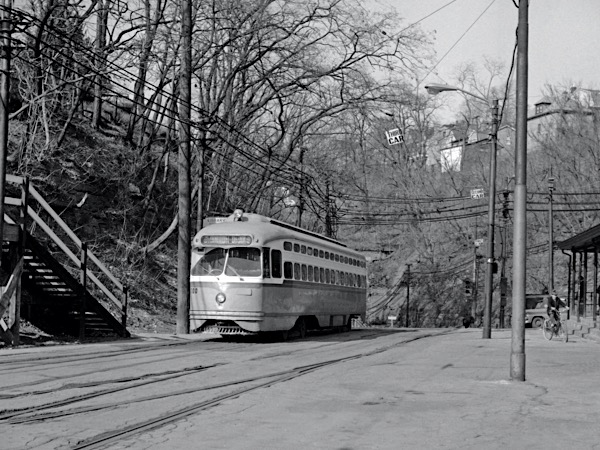
Pittsburgh, Pa / Mar 1971 / JCH
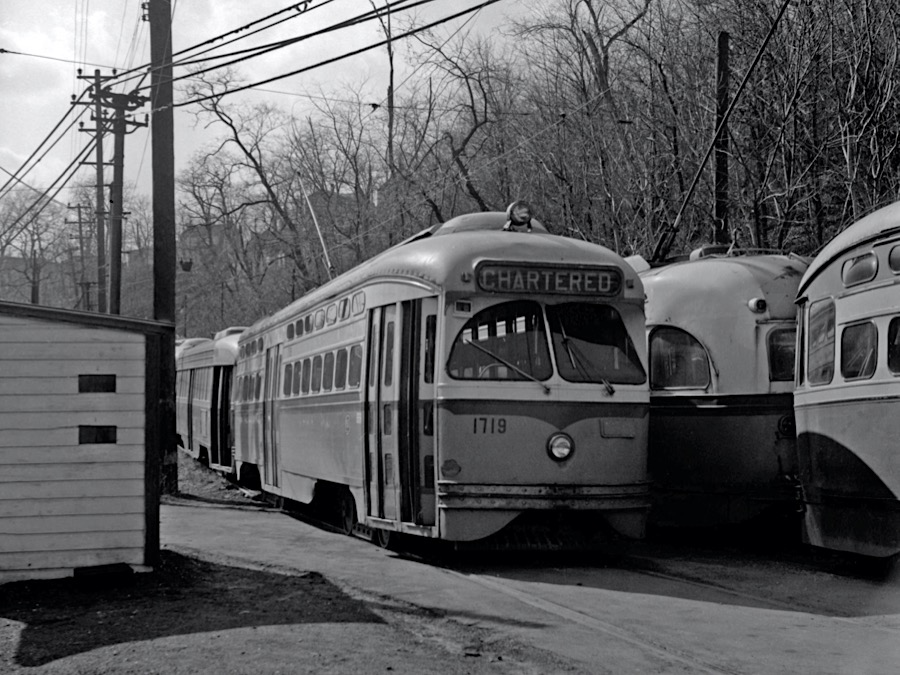
Pittsburgh, Pa / Mar 1971 / JCH
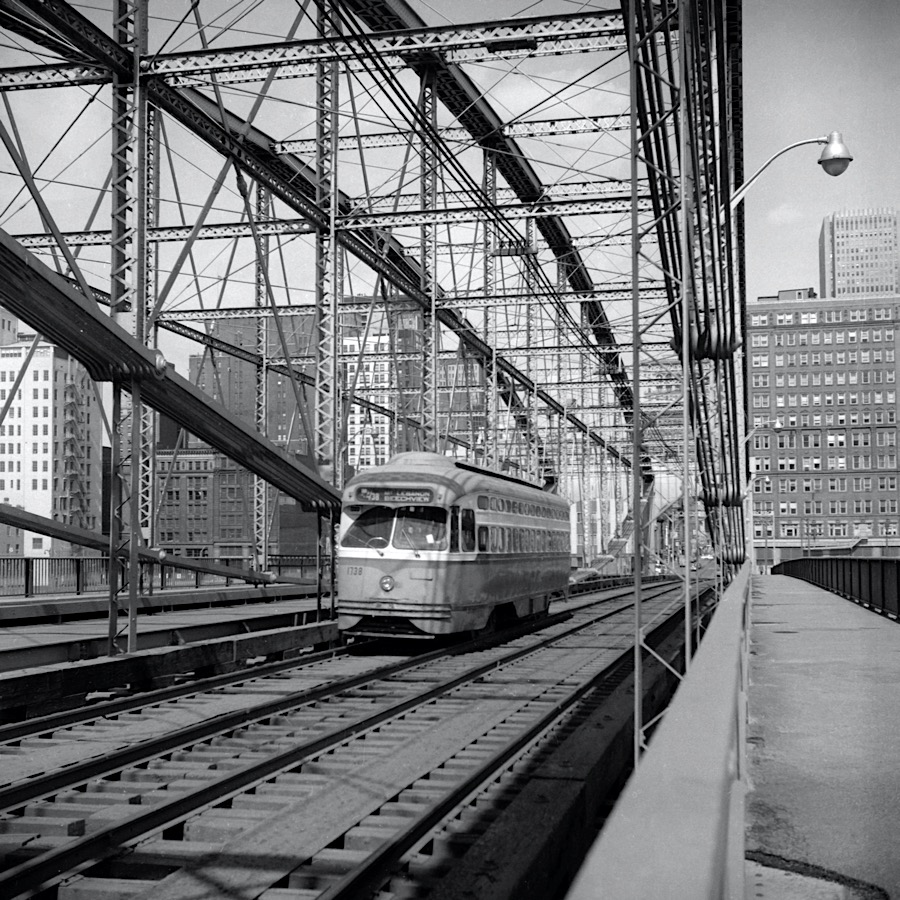
Pittsburgh, Pa / Mar 1971 / JCH
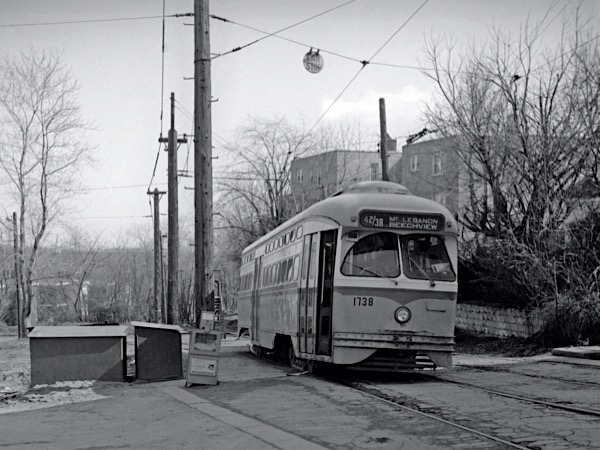
Pittsburgh, Pa / Mar 1971 / JCH
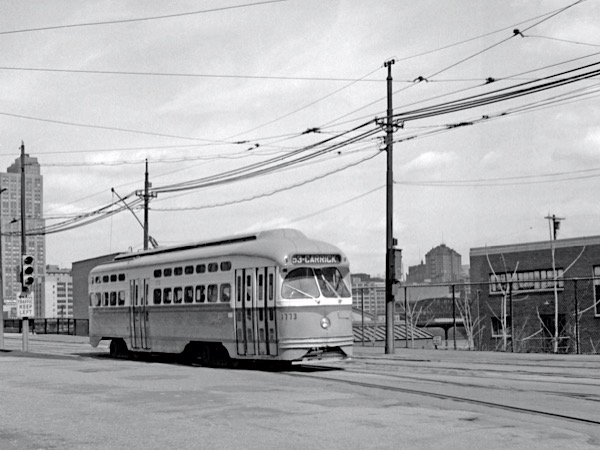
Pittsburgh, Pa / Mar 1971 / JCH
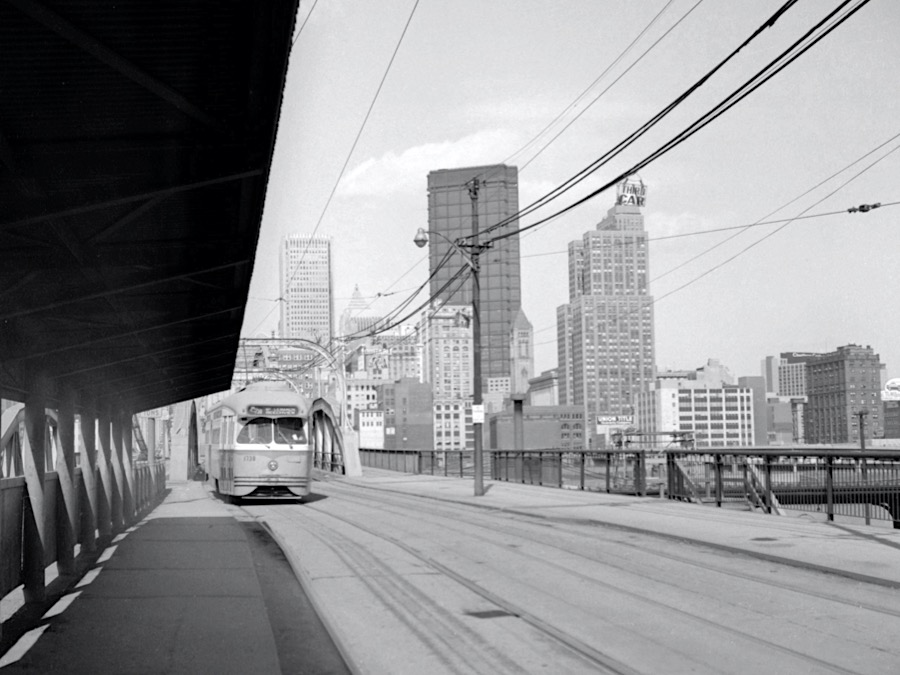
Pittsburgh, Pa / Mar 1971 / JCH

 perating in and around Pittsburgh through very rugged terrain are the remains of a once great tram network which has lasted remarkably intact into this decade but is now rapidly diminishing. The 290 miles of track and 287 cars in 1965 have dwindled to 152 track miles and 221 cars by January, 1967, while closures scheduled for this January will reduce the system to 58 miles and 128 cars. The bulk of this reduced system is made up of three routes on private right-of-way, and these should survive for several years to come. The present fleet of uniformly modern PCC-cars was built between 1942 and 1949 and the cars are also uniformly noisy and invariably dirty, for the mainten- ance of vehicles and track has been minimal over the last ten years. As if to make up for the unexciting lack of variety of trams, the routes are superbly spectacular, leaping over rivers and ravines, plunging through woods, climbing over and tunnelling through hills to make Pittsburgh the mecca for American tramway enthusiasts.
perating in and around Pittsburgh through very rugged terrain are the remains of a once great tram network which has lasted remarkably intact into this decade but is now rapidly diminishing. The 290 miles of track and 287 cars in 1965 have dwindled to 152 track miles and 221 cars by January, 1967, while closures scheduled for this January will reduce the system to 58 miles and 128 cars. The bulk of this reduced system is made up of three routes on private right-of-way, and these should survive for several years to come. The present fleet of uniformly modern PCC-cars was built between 1942 and 1949 and the cars are also uniformly noisy and invariably dirty, for the mainten- ance of vehicles and track has been minimal over the last ten years. As if to make up for the unexciting lack of variety of trams, the routes are superbly spectacular, leaping over rivers and ravines, plunging through woods, climbing over and tunnelling through hills to make Pittsburgh the mecca for American tramway enthusiasts.
Tom E. Parkinson, 1967
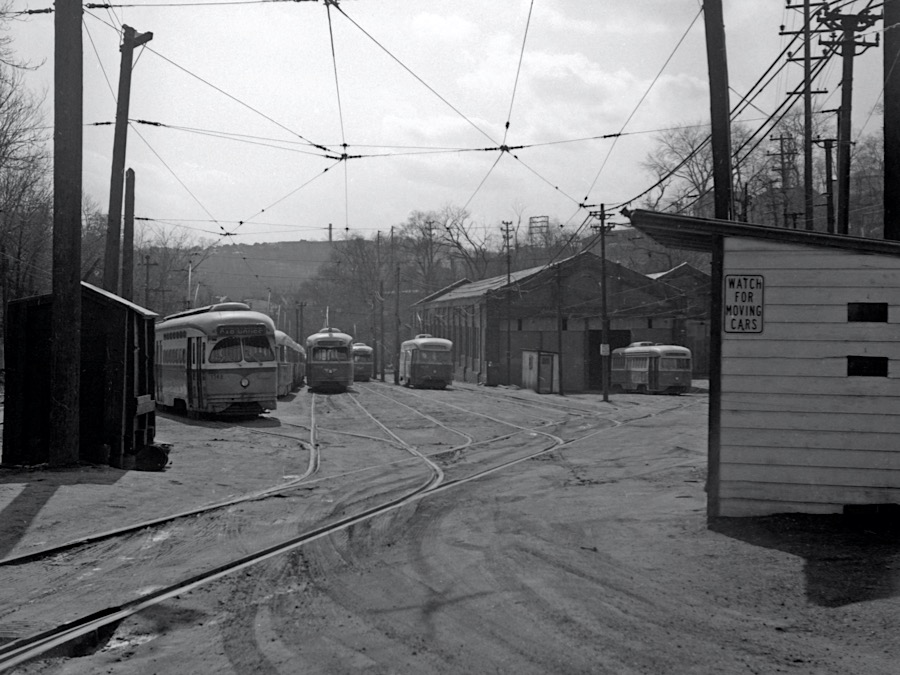
Pittsburgh, Pa / Mar 1971 / JCH
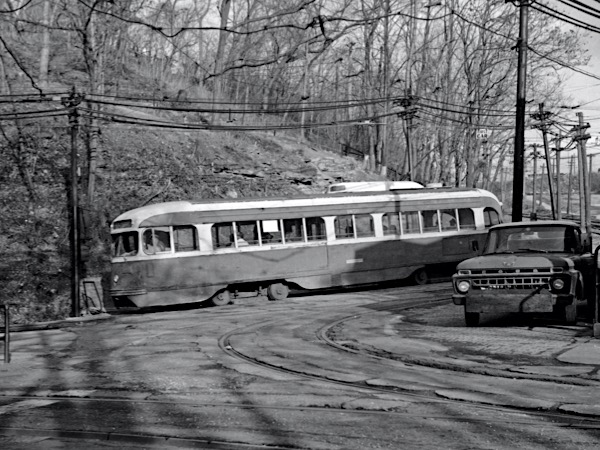
Pittsburgh, Pa / Mar 1971 / JCH
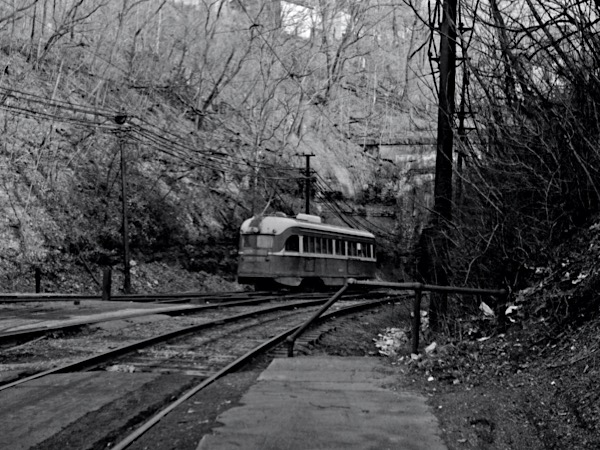
Pittsburgh, Pa / Mar 1971 / JCH
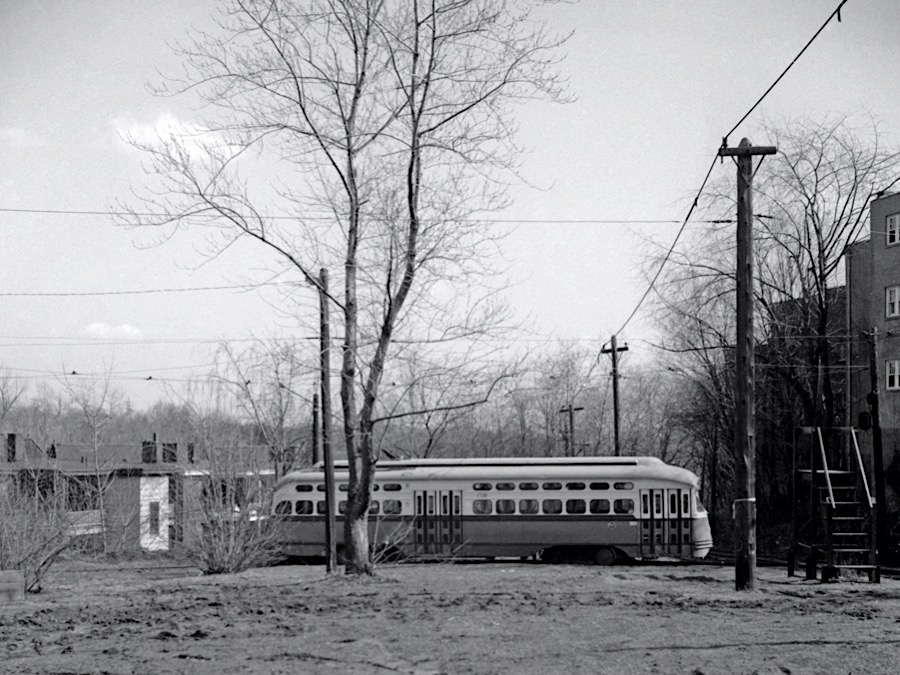
Pittsburgh, Pa / Mar 1971 / JCH
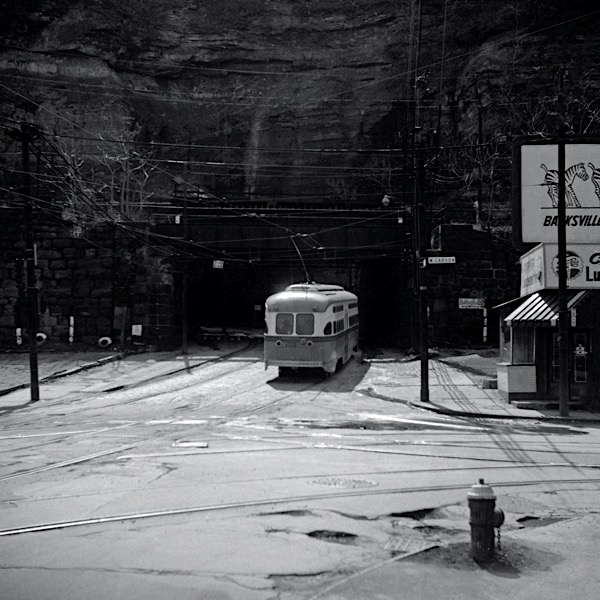
Pittsburgh, Pa / Mar 1971 / JCH
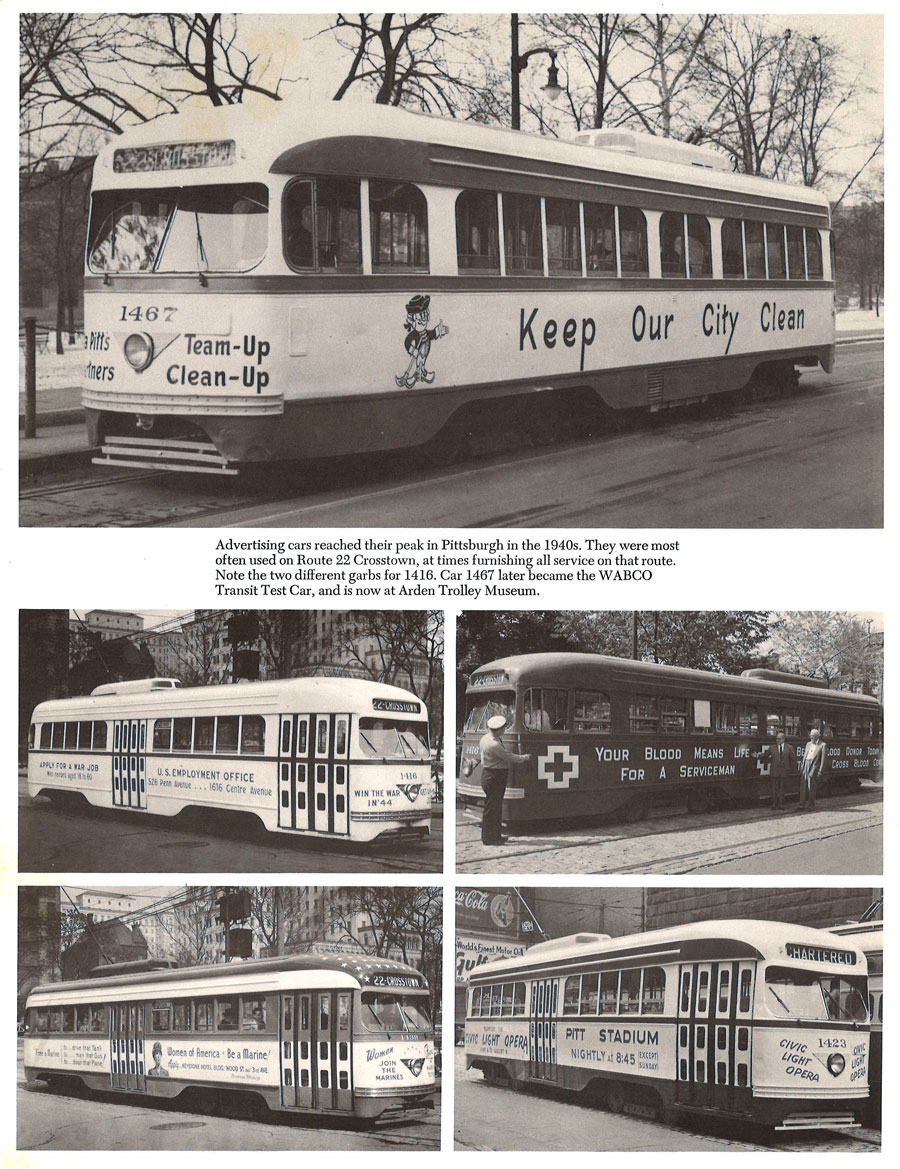
from Pittsburgh Trolley Pictorial - 1971 / collection
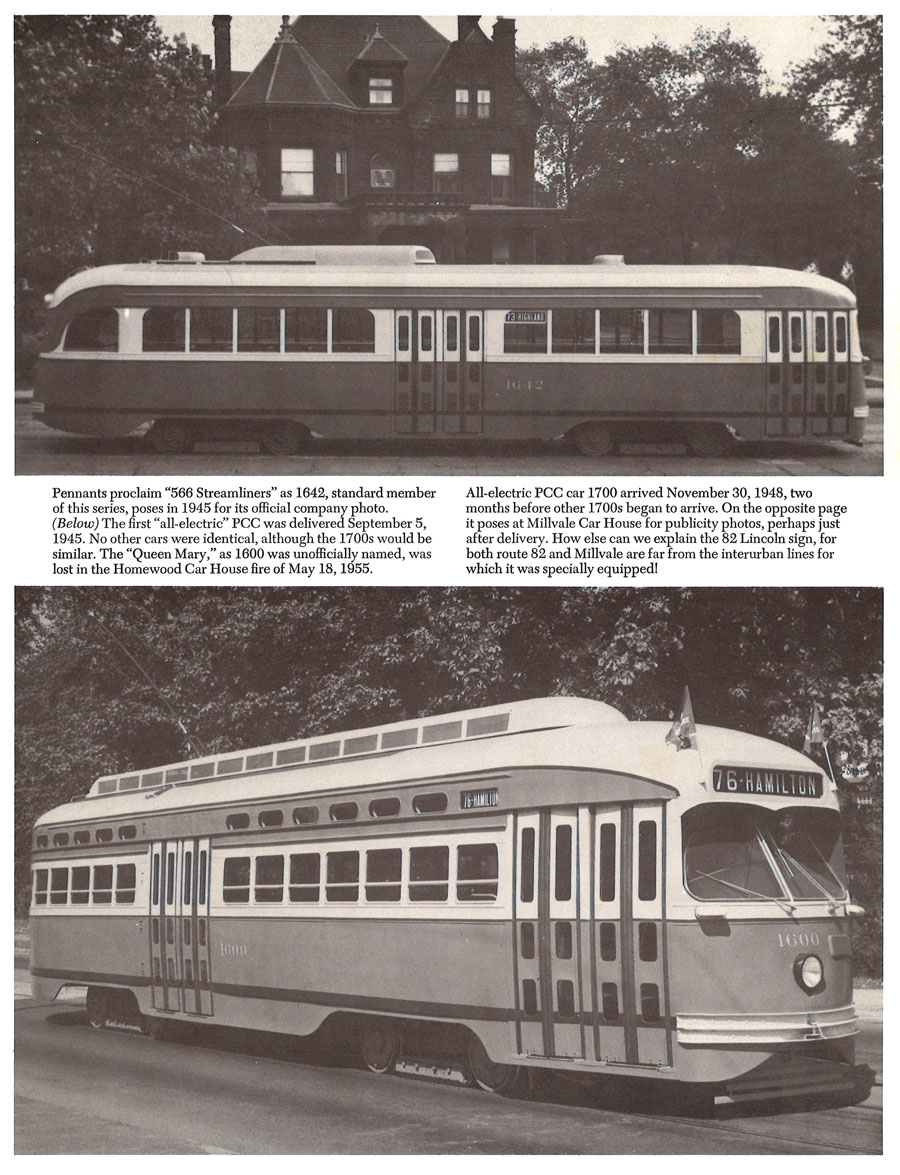
from Pittsburgh Trolley Pictorial - 1971 / collection
 Survivors
Survivors

A sampling of surviving streetcars from Port Authority Transit and its predecessors
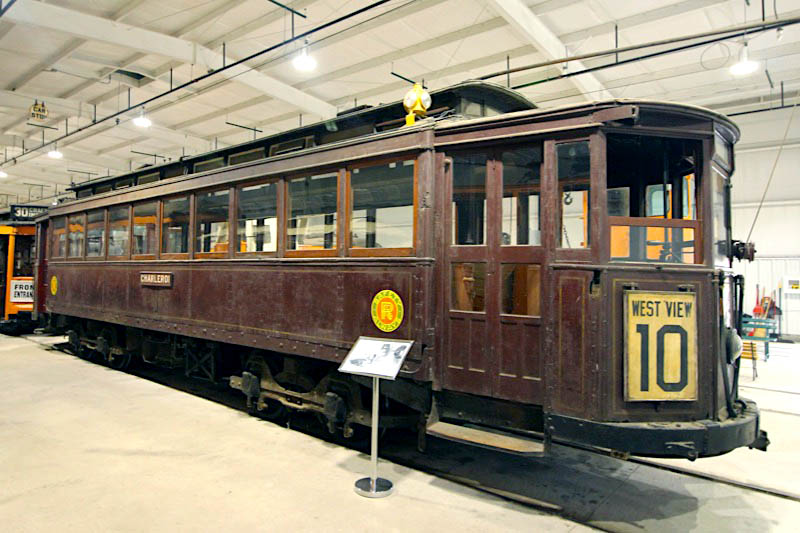
Pittsburgh Railways #3487
Washington, Pa / Jul 2019 / RWH


Pittsburgh Railways #3487
converted to work car, 1934
to Pennsylvania Trolley Museum, 1956
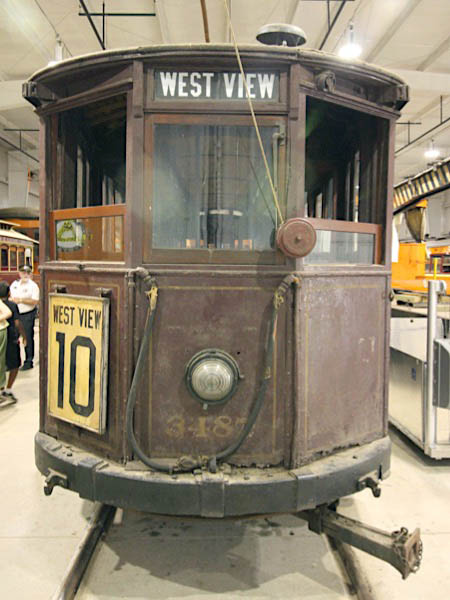
Jul 2019 / RWH
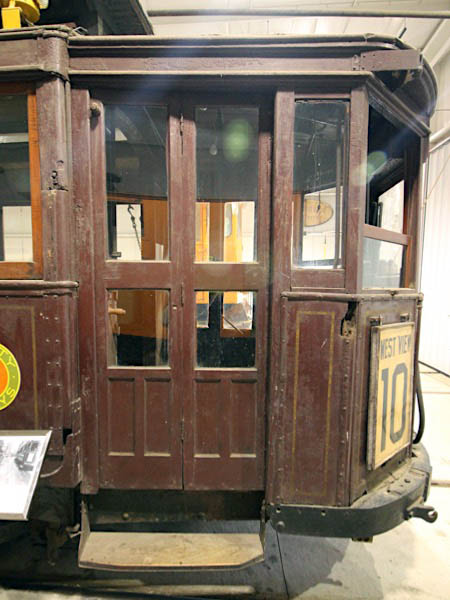
Jul 2019 / RWH
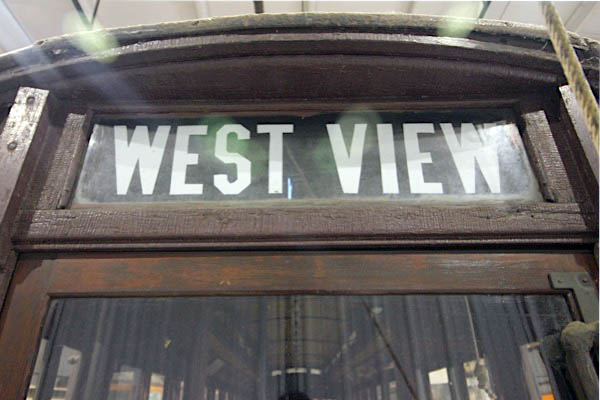
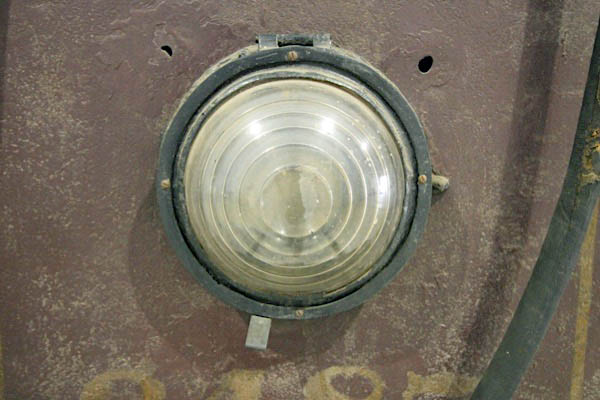
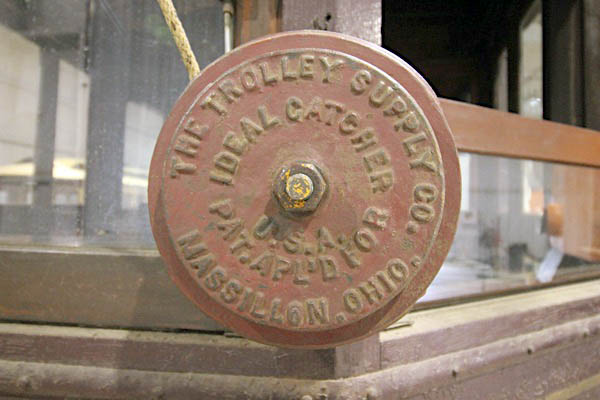
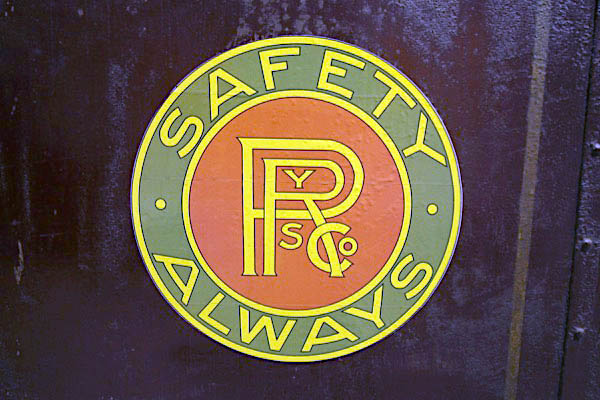
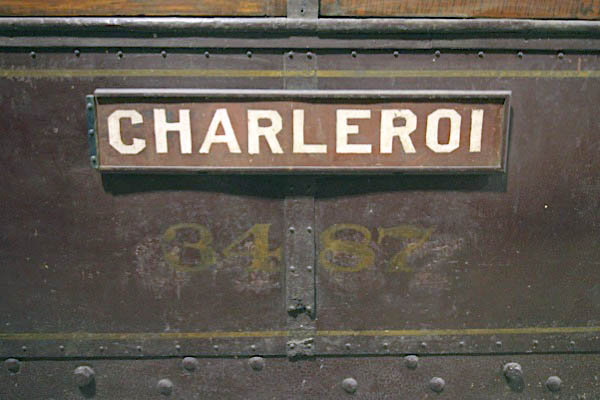
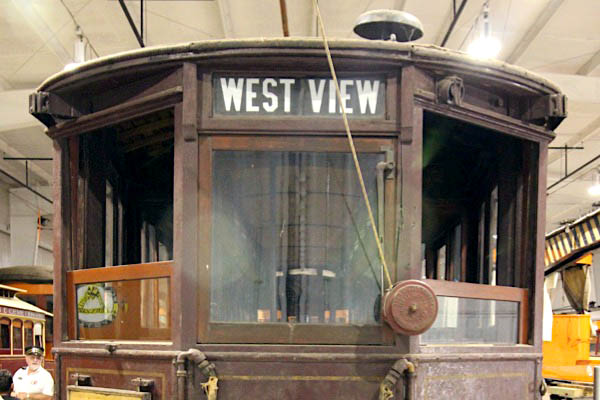
Jul 2019 / RWH
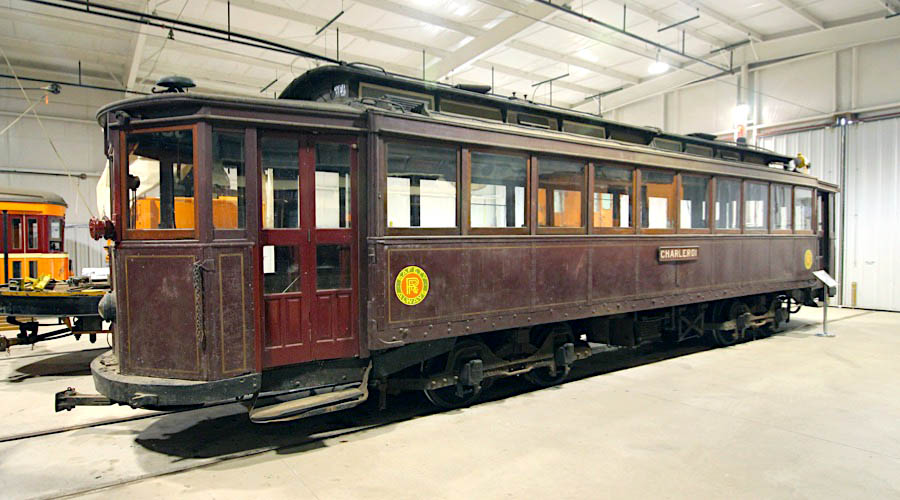
Washington, Pa / Jul 2019 / RWH
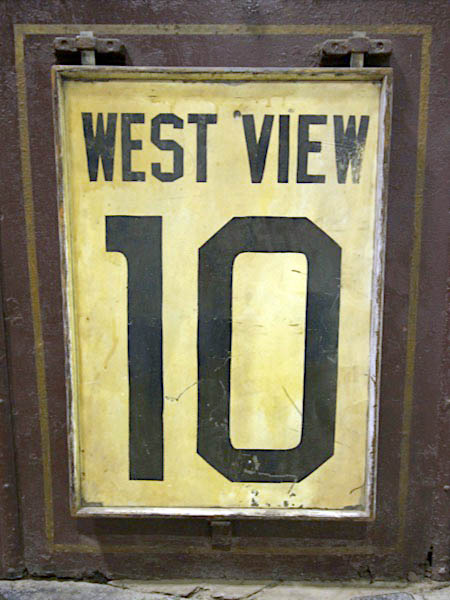
Jul 2019 / RWH
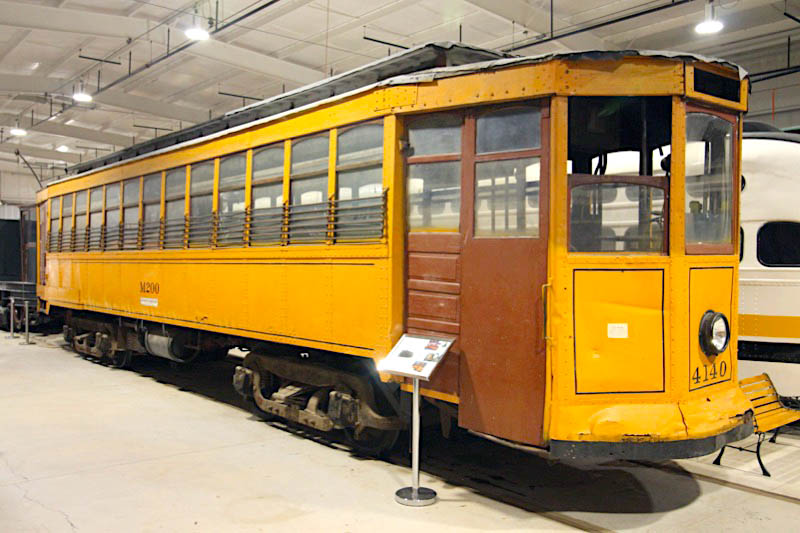
Pittsburgh Railways Tow Car #M200
Washington, Pa / Jul 2019 / RWH


Pittsburgh Railways Tow Car #M200
converted to snow scraper
converted to tow car
to Pennsylvania Trolley Museum, 1972
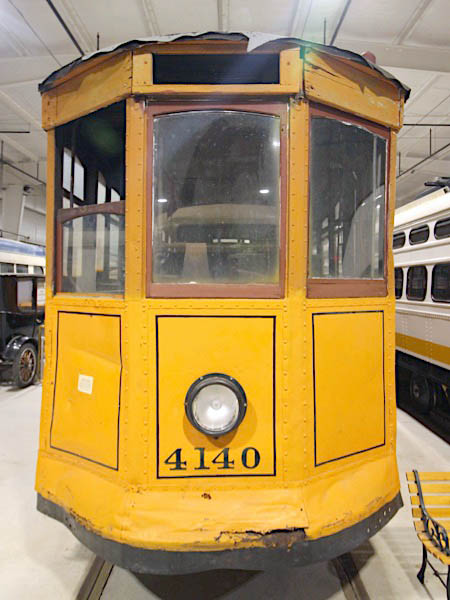
Jul 2019 / RWH
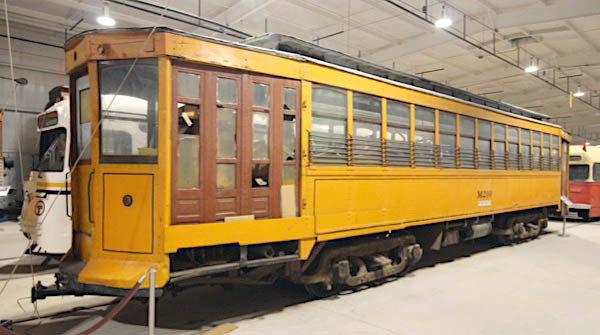
Washington, Pa / Jul 2019 / RWH
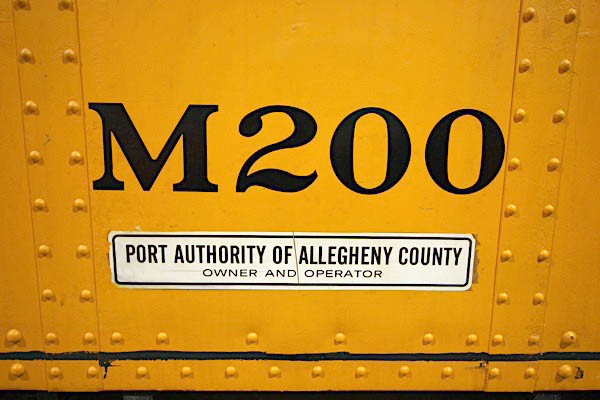
Jul 2019 / RWH
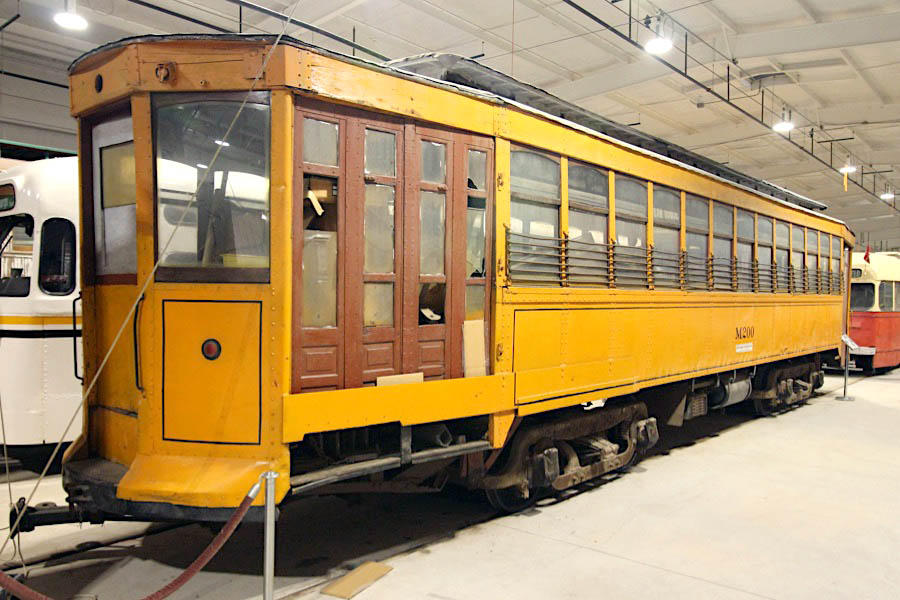
Washington, Pa / Jul 2019 / RWH
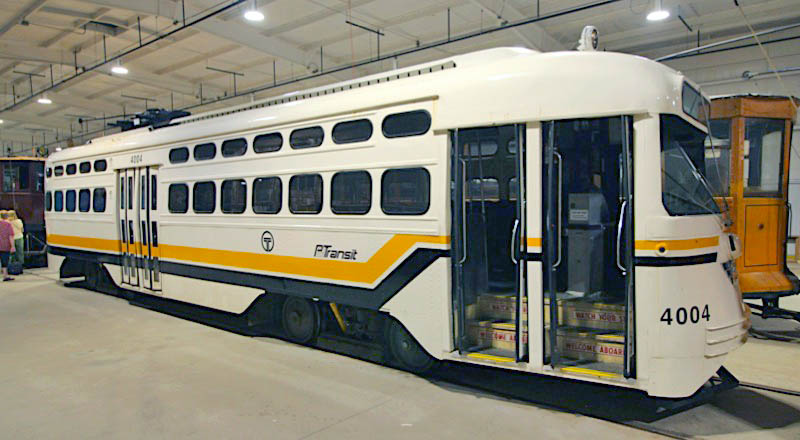
Port Authority Transit #4004
Washington, Pa / Jul 2019 / RWH


Port Authority Transit #4004
to Pennsylvania Trolley Museum, 2004
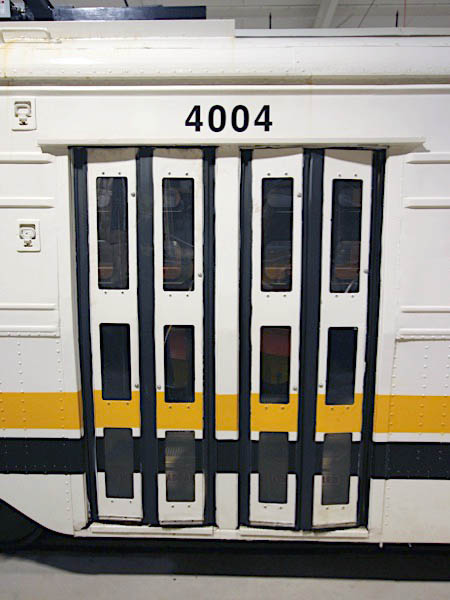
Jul 2019 / RWH
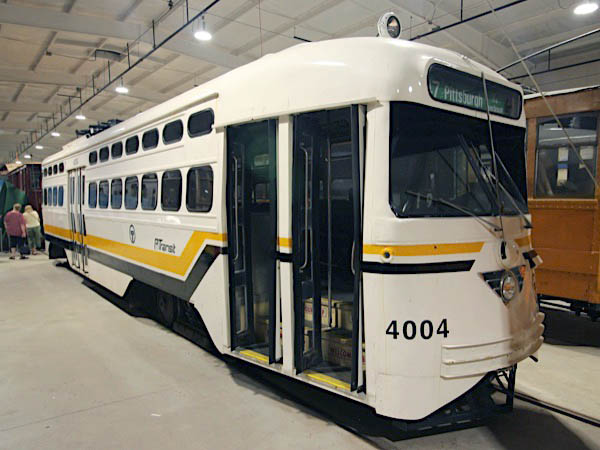
Washington, Pa / Jul 2019 / RWH
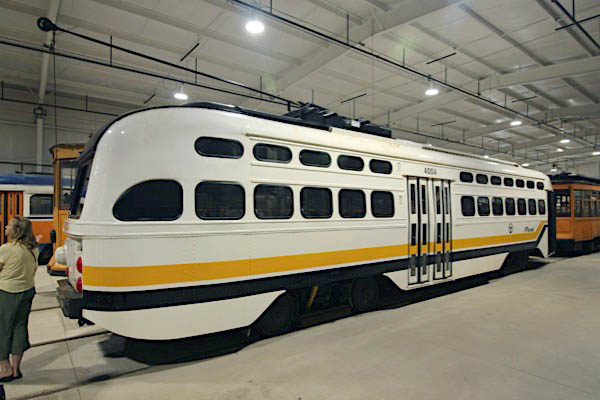
Washington, Pa / Jul 2019 / RWH

When some of Pittsburgh’s South Hills trolley lines were being upgraded to light rail standards and new equipment was being purchased, the Port Authority undertook a program to remanufacture 1949-vintage PCC cars for use on the Library and Overbrook routes. At the time these lines were not being rebuilt and required operation using the smaller lighter cars traditionally used on these lines. Originally slated to include 45 cars, the program ended with only a dozen rebuilds, due to cost realities. Those that were finished, however, were essentially new cars, with all-new electrical and running gear of the type and style that they were originally equipped. In September 1999 car 4004 was the last PCC to operate in revenue service, ending 63 years of PCC car operation in Pittsburgh. It was donated to the Pennsylvania Trolley Museum by the Port Authority, who generously stored the car until the new Trolley Display Building was completed, and then repainted it before delivery.
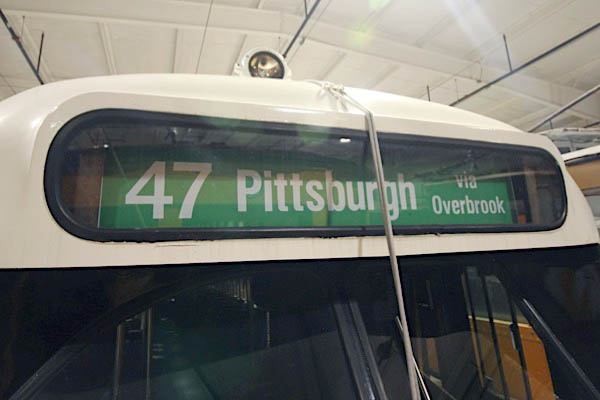
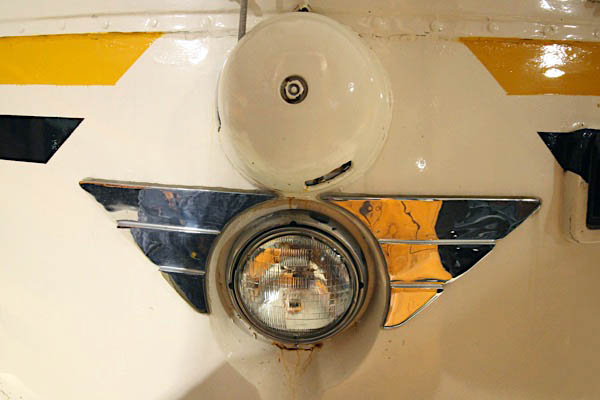
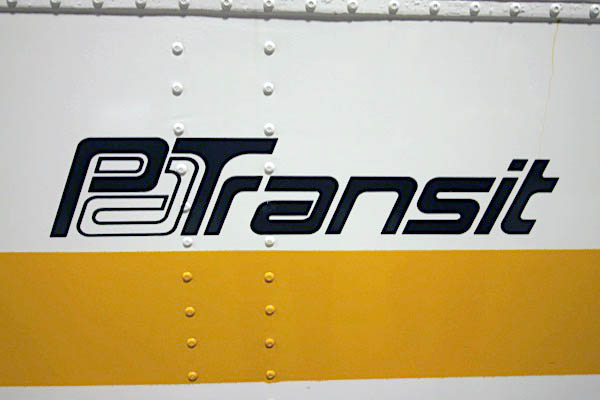
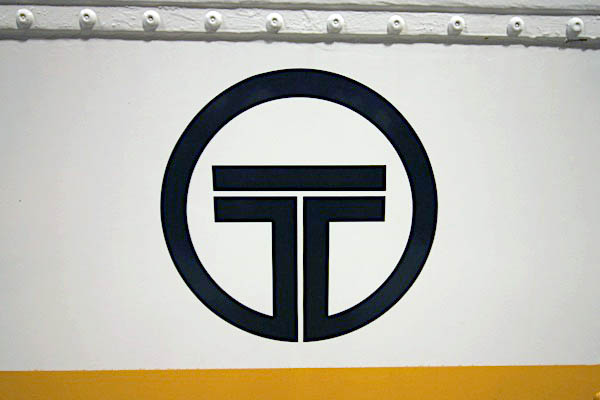
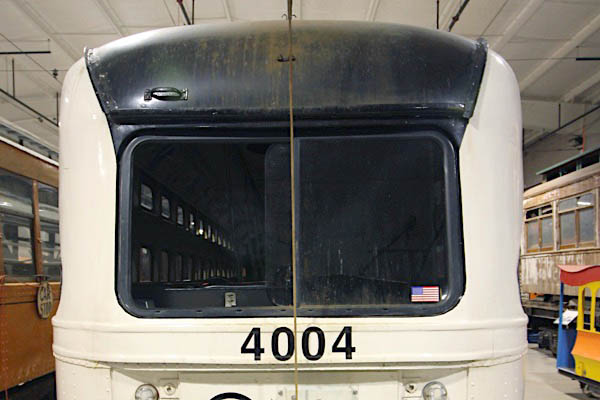
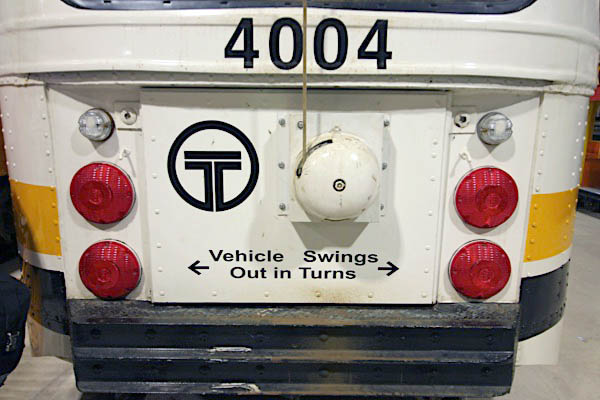
Jul 2019 / RWH
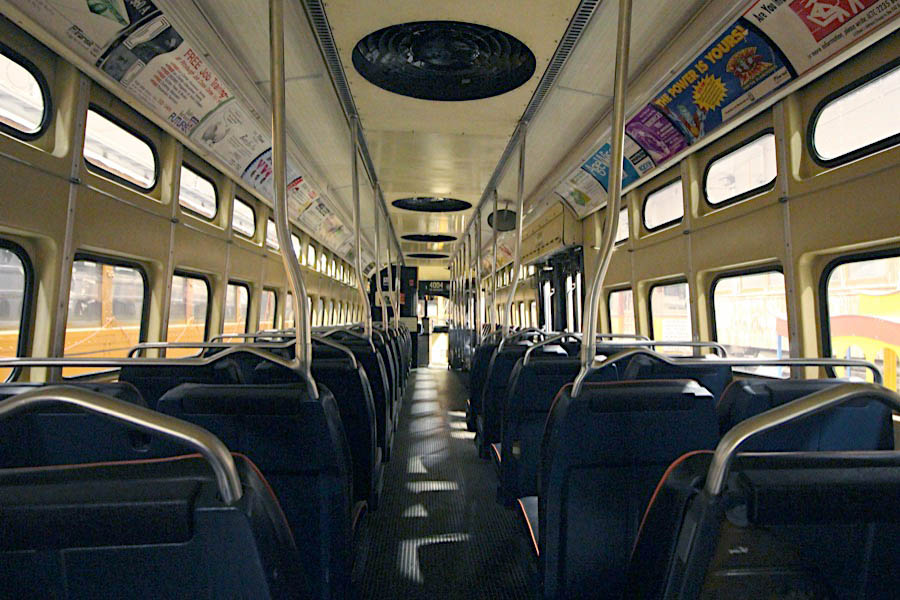
Jul 2019 / RWH
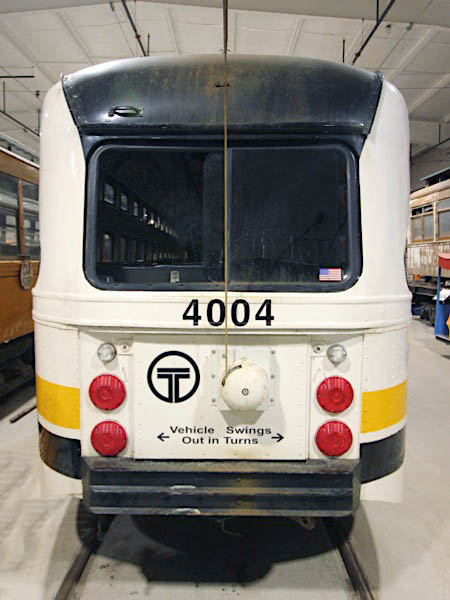
Jul 2019 / RWH
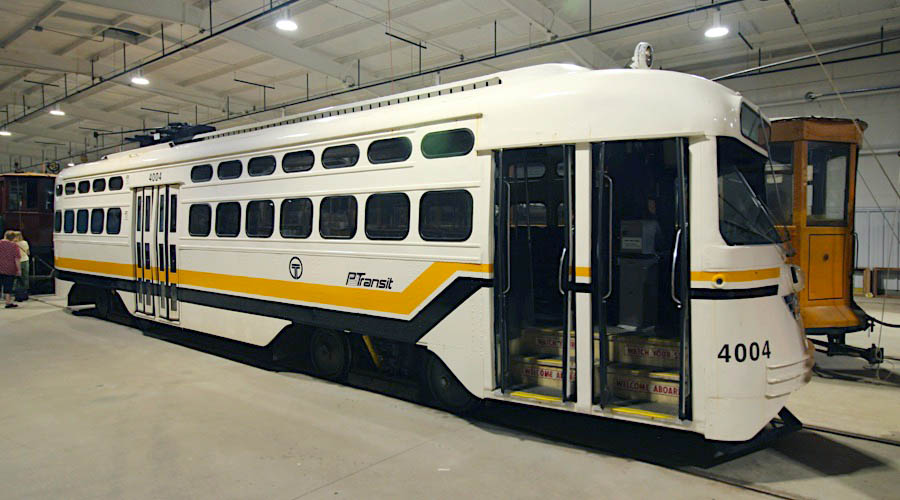
Washington, Pa / Jul 2019 / RWH

See also our complete Pennsylvania Trolley Museum featured scrapbook in Preservation
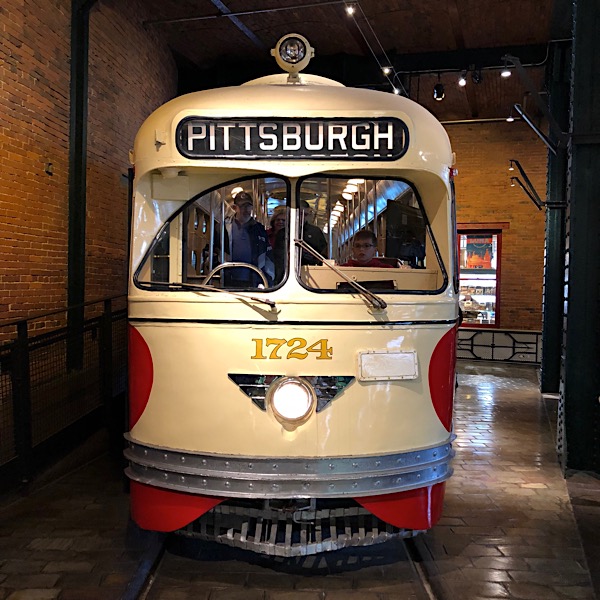
Port Authority Transit #1724
Pittsburgh, Pa / Nov 2018 / RWH
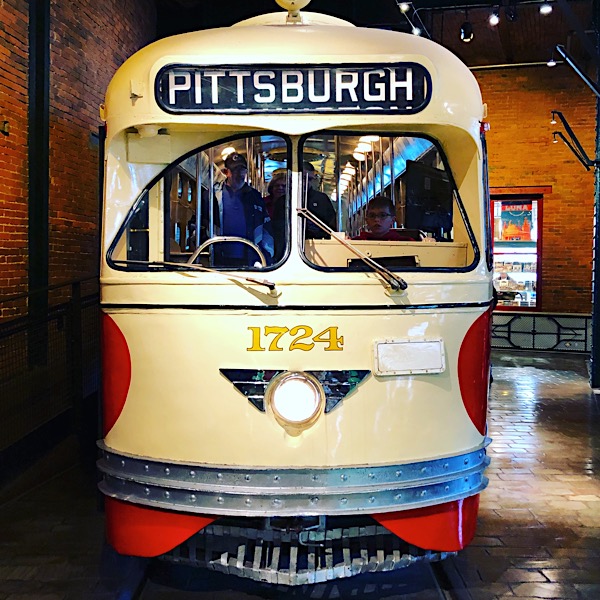
Pittsburgh, Pa / Nov 2018 / RWH
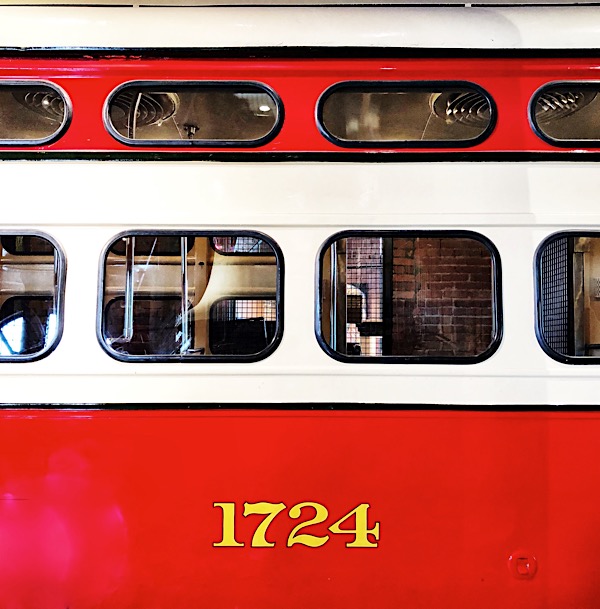
Nov 2018 / RWH
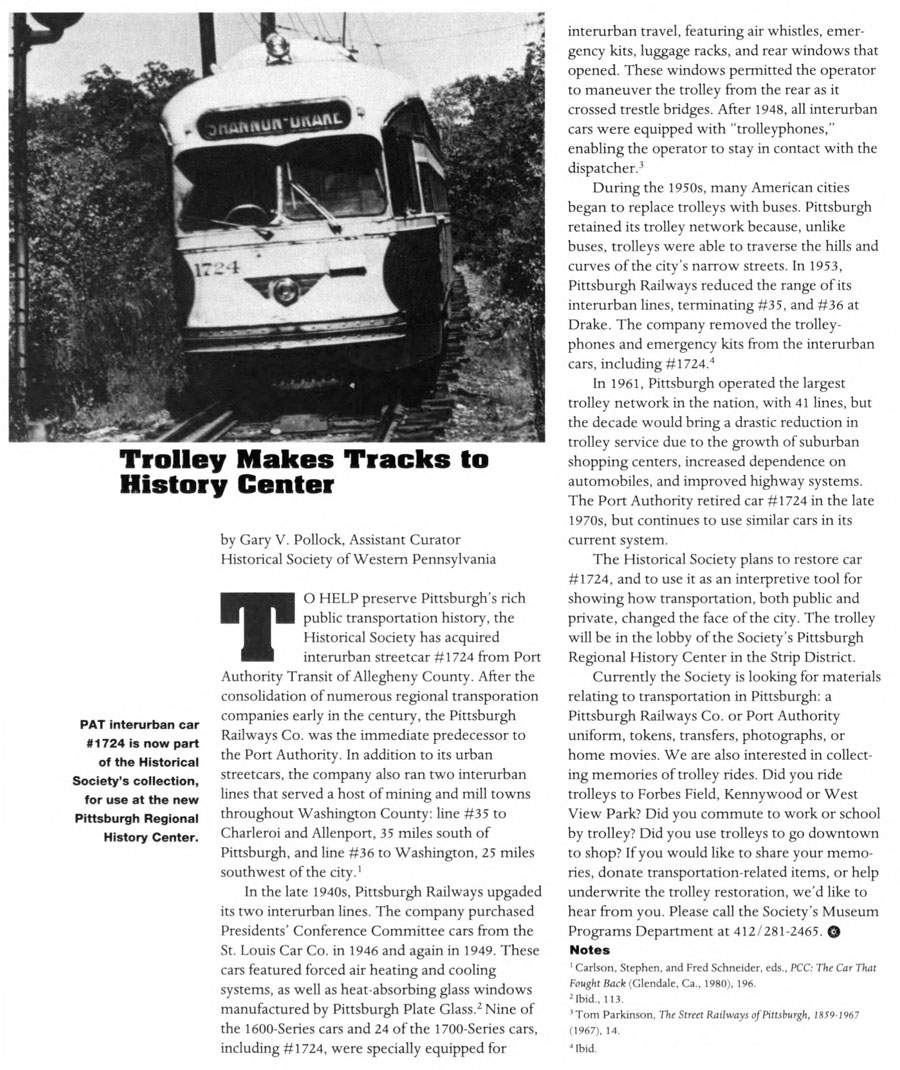
collection
Links / Sources
- Shawn Bennear's Photo History of Transit in Pittsburgh
- NYCSubway.org page for Pittsburgh, Pennsylvania
- Wikipedia article for Pittsburgh Light Rail, including PAT history
- Pennsylvania Trolley Museum streetcar collection, including PAT cars
- Tom E. Parkinson, The Street Railways of Pittsburgh, 1859-1967 (Modern Tramway, 1967)
